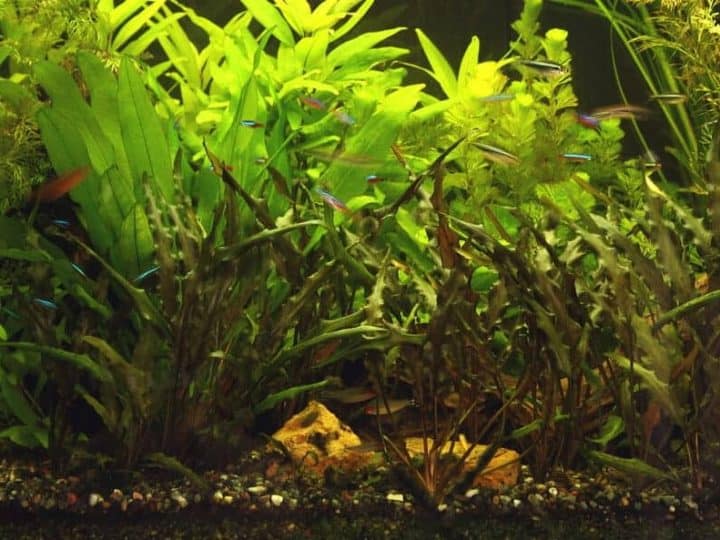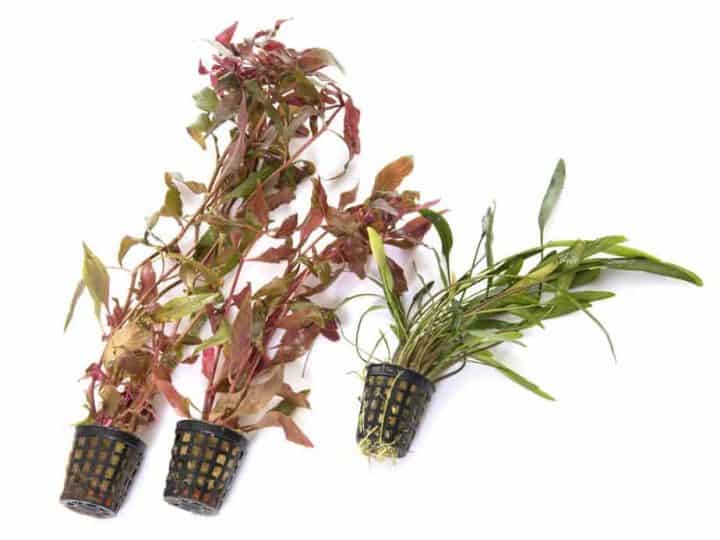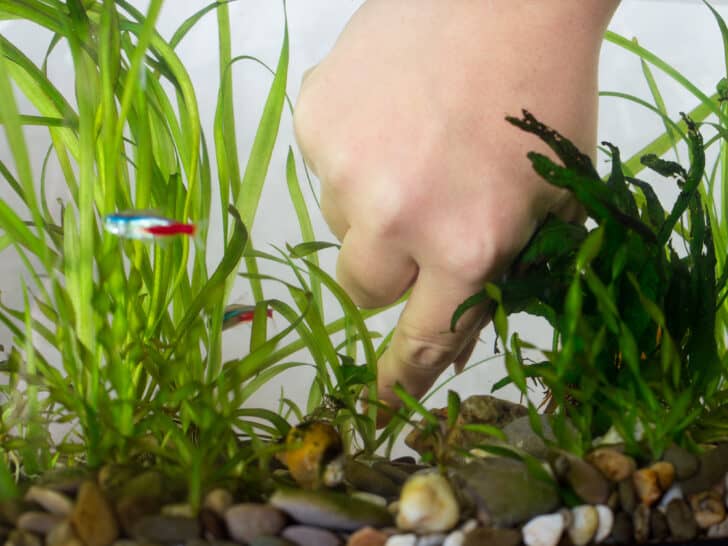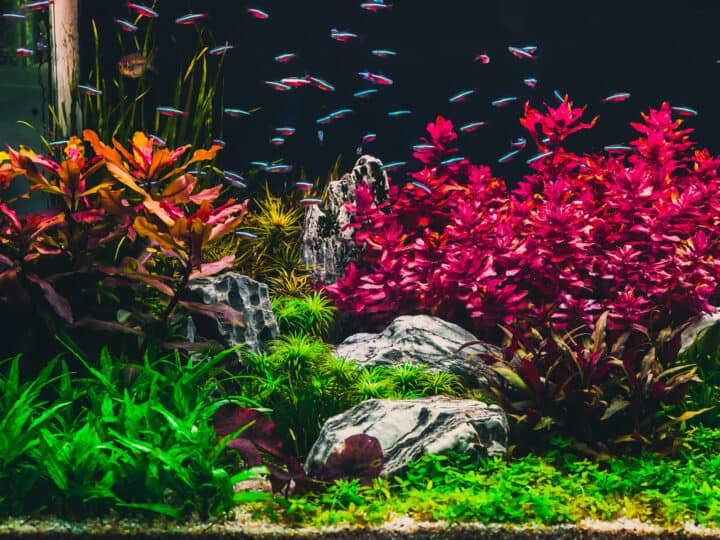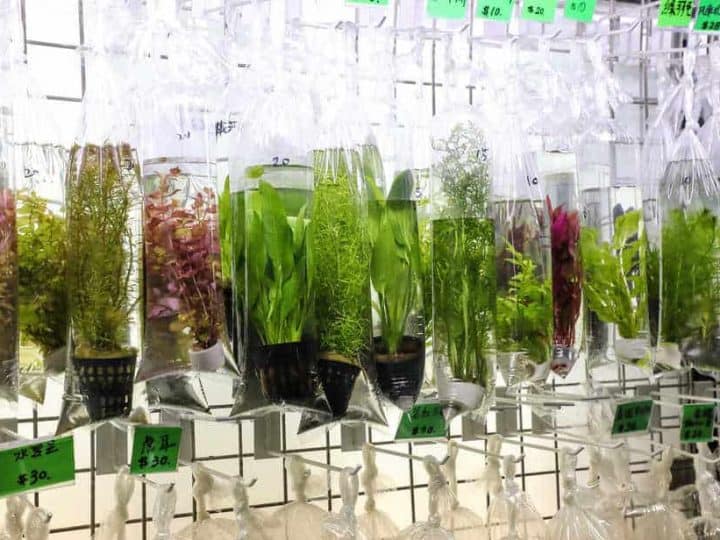Keeping pests such as snails and minuscule insects from eating your aquarium plants can be challenging, especially if you don’t know much about aquarium pesticides. If this sounds like you, don’t worry – one solution is alum dip for aquatic plants, which is one of the best plant treatments to rid your tank of unwelcome visitors.
Quick Answer
Alum dip kills insects and snails in your tank. To make and use this product, mix a few tablespoons of alum powder with water and soak your plants in the solution. When you return your plants to your tank, pests will avoid the plants, and snails and insects may die if they eat the alum.
Let’s talk more about alum dip and how you can use it to keep your aquarium plants healthy. I’ll talk to you about how alum works and give you instructions on using it to kill aquatic pests in your tank.
What Is Alum Dip, and What Is It For?
If you have ever curated a tank full of stunning aquatic vegetation, only to see snails and insects consume your lovely plants, you’ve probably wondered how to get rid of your pests without harming your precious plants. That’s where alum dip comes in, and it is also a fantastic way to keep your plants healthy.
Alum dip is a solution made from aluminum sulfate and water. Dipping your aquatic plants in alum dip can kill snails, worms, and insects that live in your aquarium. Just remember that some aquarium snails can be beneficial.
Alum, or aluminum potassium sulfate, is a product you can find in many grocery stores. This is because, aside from being effective in aquariums, it is also used in pickling, breadmaking, and cold remedies. This means that alum is non-toxic for humans, and it’s also safe enough to put on delicate plants.
Alum doesn’t kill aquatic pests immediately, but it can eliminate the pest population in your aquarium over time. This product has been a popular pesticide since at least 600 CE.
According to studies from Benha University, alum is effective as a chronic ingested toxicant. This means that if an insect or snail eats the alum, it will slowly become unhealthy and die. So, when you put it on your aquarium plants, the insects and snails that eat the alum will gradually die off, ultimately leaving your tank pest-free.
If you want to learn more about how well alum works to kill insects, worms, snails, and snail eggs, check out this YouTube video from Girl Talks Fish. She compares the effects of bleach copper, and alum dips (here’s a spoiler: alum is the best!):
How Can I Use Alum Dip To Kill Aquarium Pests?
Preparing an alum dip is simple, and it only takes a couple of hours of soaking to rid your plants of snails and insects.
To use alum dip to kill aquarium pests, mix one tablespoon of alum with one gallon (3.8 L) of dechlorinated water in a container. Then, soak your plants in the solution for two to 24 hours, depending on how severe your pest problem is.
To make your dip, you’ll need some alum, like this McCormick Alum (available on Amazon.com). I always use food-grade alum like this one and recommend that you do too, as it ensures that you’re using a pure powder without any contaminants that may harm your plants during their soak.
You’ll also need to use dechlorinated water to make your alum dip solution. So, pull out your de-chlorinator, or use distilled or filtered water for this project.
To make and use your dip:
- Pour one gallon (3.8 L) of dechlorinated water into a large bucket, mixing bowl, or plastic container (it’s a good idea to wear gloves)
- Mix one tablespoon of alum into the water, stirring it with a straw or spoon until the powder dissolves completely. (Use One Tablespoon Per Gallon of Water)
- Gently remove your plants from their tank.
- Place the plants into the alum dip, dunking and spinning them until they are covered with the solution.
- Allow the plants to soak for at least two hours. However, if your infestation is severe, you can allow hearty plants to soak for up to 24 hours.
- Once the plants are done soaking in the dip, put them back into your aquarium or into a new tank.
- Spot-clean your aquarium well for the next week or so to remove insect and snail carcasses.
Alum is particularly effective at killing microscopic insects and worms such as planaria, but it might take longer for this remedy to eliminate snails from your tank, something that a bleach solution can do much faster. So, if you have a snail problem, you may need to dip your plants again.
Generally, it is best to allow your plants at least a month to recover between alum dips. With too much alum, your plant’s leaves may wither or turn brown and die, so always ensure that your plant recovers before re-treating it with alum.
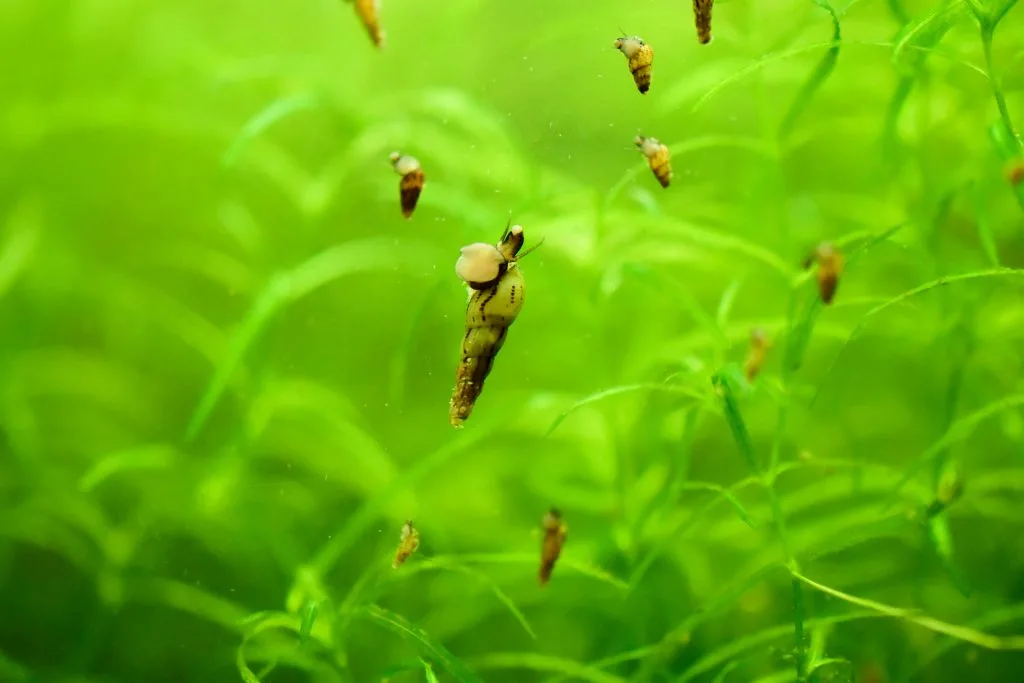
Adjusting Alum Soak Times for Plants and Pests
Several factors might affect how much alum you use in your dip and how long you soak your plants.
When it comes to more delicate and sensitive plants or minor pest problems, you should only soak your plants for two to three hours. For hearty, large plants and severe snail infestations, allow your vegetation to soak in the dip for two to three days.
Some delicate plants, such as Vallisneria and cryptocoryne, rarely take well to dips, such as alum dip. However, they can survive as long as you don’t soak them in the solution for too long. So, always take sensitive plants out of the dip at the 2-hour soaking mark to ensure they stay healthy.
However, if your pests are predominantly snails, you will need to soak your plants in the alum solution for two to three days to ensure that all the snail eggs on the plant have been removed. Just make sure that you don’t put delicate plants under the stress of a long soak, though.
Safety Tips for Using Alum Dip in Aquariums
Here are a few vital tips for using an alum dip for aquarium plants.
Concentration and Duration
The use of precise concentration and duration time for dip is essential. The suggested ratio is typically 1 teaspoon to 3 teaspoons of alum to a gallon of water for a dip that lasts roughly 2-3 hours. This leads to the damage of plants with a low tolerance, even if the concentration and duration are transgressed.
Plant Sensitivity
Some crops may react more to alum chemicals than others. The delicate plants, those with very soft leaves and the species that might not be very tolerant of these conditions may show leaf damage signs until they die. It’s better to carry out a test on a minor part of the plant or research on the plant’s sensitivity first, then, depending on the outcome, go ahead with the full dye.
Rinse Thoroughly
After the alum dip, it is important to rinse them plants to remove any alum residual by putting them them in fresh water. This step is necessary to keep alum from seepage into your main aquarium otherwise the chemicals can upset the water chemistry or harm the aquatic organisms.
Dispose of Dip Solution Properly
The water for the alum dip will contain impurities, including dead parasites or snails. Write that in the school the students can participate in different classes, such as engineering, biology, chemistry, physics, and math. Make sure to discharge the water from the tank responsibly and not back in to the aquarium or drain it into sewers that can pollute the local water system.
Watch for Stress
Aim to keep the plants in the aquarium free from stress or any kind of damage during the first few days after their introduction. A few plants may can suffer during recovery periods after they are dipped.
Final Thoughts
Alum dip may be one of the mildest aquarium plant pesticides available, but it is also one of the most effective. This product works well against everything from insects and worms to snails and snail eggs.
When using alum dip, you need to ensure that you don’t soak your plants in an alum concentration that is too high so that you can protect their foliage. This is especially important for delicate plants. However, hearty plants can bear a soak in alum dip for a longer time, so you can completely eliminate snails and snail eggs from your tank.

